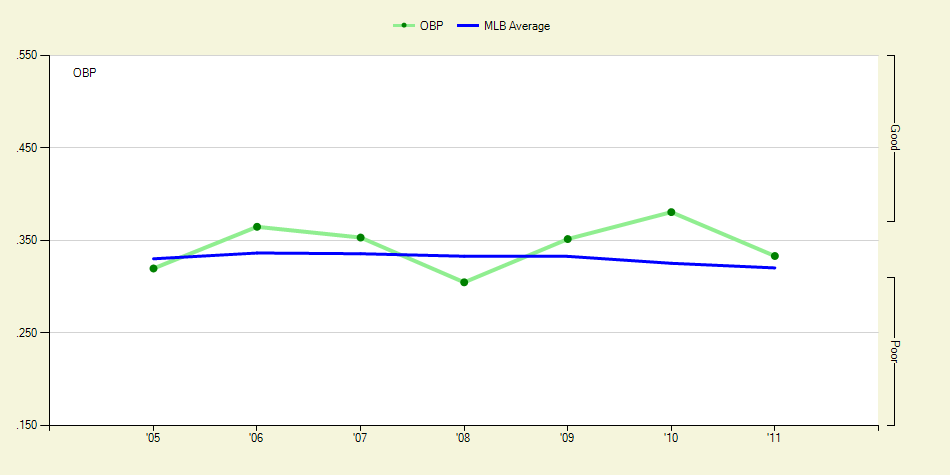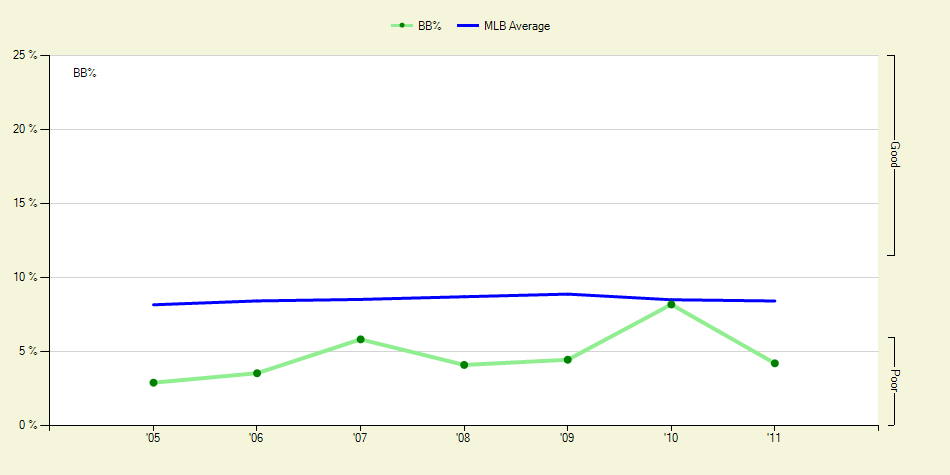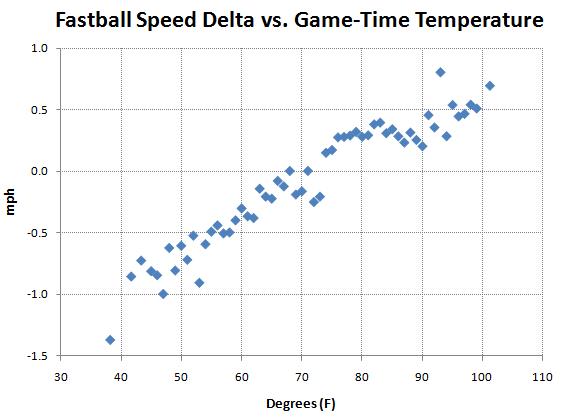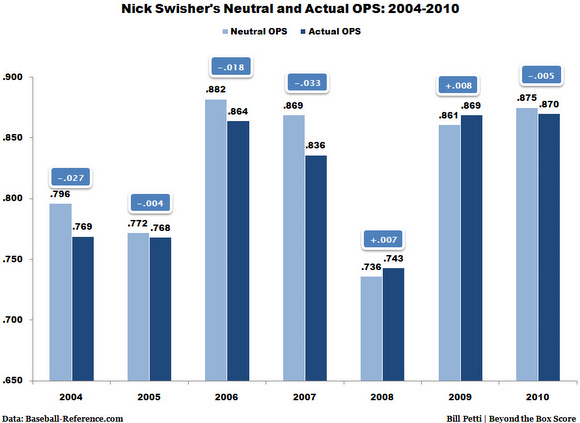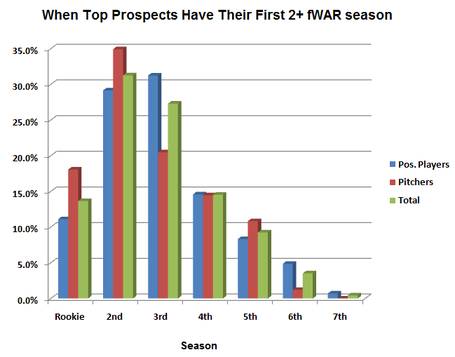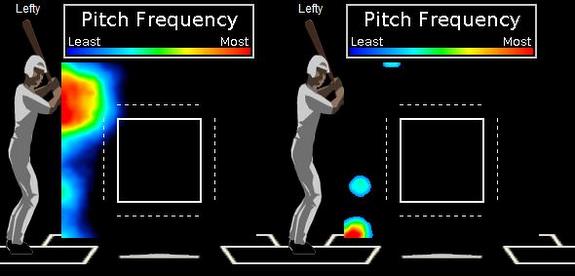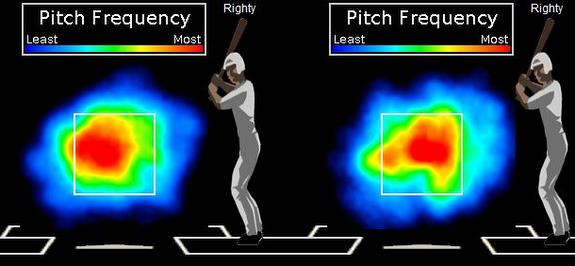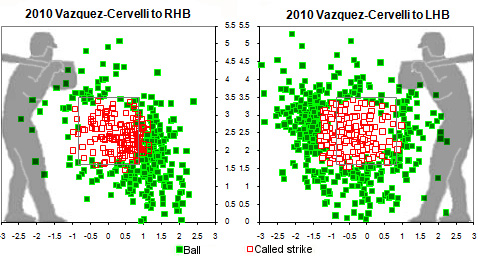One way to define an outlier is one observation that deviates in a notable manner from the other observations in a sample. Here’s a graph of Robinson Cano’s on-base percentage throughout his career graphed alongside league average on-base percentage. See if you can spot the outlier(s):
The league average sits right below .350 in this sample. For Cano, the outliers here appear to be 2008, a year in which he posted a typically low walk rate and an abnormally low BABIP, and last year, a year in which he doubled his career walk rate and posted a relatively normal BABIP by his standards. To cut down on the effect BABIP can have on on-base percentage, here’s a graph over time of his walk rate. Again, see if you can spot the outlier(s):
This one’s even easier to pick out: the outlier is 2010. Unfortunately, the purple line here is league average walk rate and the green line is Cano’s walk rate. As mentioned above, Cano doubled his walk rate last year en route to a .319/.381/.534 line. At the time it looked like a big step forward for a young developing player entering his prime. This year it’s right back where it always has been, below 5%.
Many times it’s common to hear fans or announcers get frustrated with pitchers who can’t throw strikes and struggle with command. “Just throw strikes” is a common refrain, as if control and command were mere switches one simply flips on or off depending on concentration. For some this may be the case, for others it’s a question of ability. Certain pitchers, for whatever reason, aren’t good (by MLB standards) at directing the ball where they want it to go.
It’s similar with batters, and with Robinson Cano. Pitch recognition and plate discipline are things that one can get better at, true. Kevin Long seemed to attempt to infuse Cano with plate discipline earlier in the year by instructing him to stop swinging at the first pitch, advice which Cano disregarded. This is a frustrating state of affairs, but perhaps some of the frustration can be ameliorated by simply accepting that Robinson Cano isn’t very good at showing discipline at the plate.
Cano is 28 years old and he’ll turn 29 this October. A 5% walk rate is the norm for Cano at this point in his career; the 8.2% mark in 2010 appears to be the outlier. Barring him developing new skills, it appears that Cano’s on-base percentage will fluctuate between .330 and .380 as his BABIP fluctuates. It sure would be nice if he would develop some patience to complement his incredible power; it likely make him the best second baseman in the game. Yet it doesn’t seem likely to happen and that’s a shame, because it does represent a hole in his game. But hey, there are worse things in the world than having Robinson Cano as your second baseman, walk rate and all.
